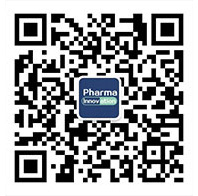Standard medical masks appear to protect outpatient healthcare personnel (HCP) against lab-confirmed influenza as well as more costly N95 respirators, a prospective study shows.
The Respiratory Protection Effectiveness Clinical Trial (ResPECT) found the incidence of laboratory-confirmed influenza was 8.2% of HCP-seasons among those who used N95 respirators and 7.2% of HCP-seasons among those who wore medical masks, a difference that was not significant.
"In addition, there were no significant differences between N95 respirators and medical masks in the rates of acute respiratory illness, laboratory-detected respiratory infections, laboratory-confirmed respiratory illness, and influenza-like illness among participants," the researchers write.
The trial, conducted during four peak viral seasons, was published online September 3 in JAMA.
Previous clinical studies have been unable to ascertain the effectiveness of N95 respirators and standard medical masks in preventing viral infections among healthcare personnel in the workplace, yet some groups have started recommending N95 use.
"In many ways, the ResPECT study was specifically designed to address limitations of earlier studies," Thomas R. Talbot, MD, MPH, Vanderbilt University School of Medicine, Nashville, Tennessee, and Hilary M. Babcock, MD, MPH, Washington University School of Medicine, St. Louis, Missouri, write in an accompanying editorial.
"The cohorts that were randomized to use medical masks and N95 respirators were similar, with no significant between-group differences in job title, vaccination status, patient population served, smoking status, use of glasses or contact lenses, and presence of children at home, minimizing the risk of bias through differential exposure risk," they add.
The investigators conducted a pragmatic, cluster randomized clinical trial among 2862 healthcare personnel at 137 outpatient study sites across seven US medical centers. During each of the four peak viral seasons from September 2011 to May 2015, they randomly matched pairs of outpatient sites, or clusters, to wear either the N95 respirator (1993 participants in 189 clusters) or the medical mask (2058 participants in 191 clusters) when in close proximity to patients, for a total of 2668 HCP-seasons.
A total of 2371 participants completed the study (5180 HCP-seasons). The researchers adjusted for covariates, including age, sex, race, occupation risk level, number of members in household younger than 5 years, season-specific flu vaccine status, proportion of daily exposures to others with respiratory illness, self-reported adherence to hand hygiene, and intervention group assignment.
The primary outcome, the incidence of laboratory-confirmed influenza infection events, was seen in 207 of 2512 HCP-seasons (8.2%) among participants in the N95 respirator group and 193 of 2668 HCP-seasons (7.2%) among the medical mask group (difference, 1.0%; 95% confidence interval [CI], −0.5% to 2.5%; P = .18; adjusted odds ratio [OR], 1.18; 95% CI, 0.95 - 1.45).
There were no significant differences in secondary outcomes, including acute respiratory illness, laboratory-detected respiratory infection, laboratory-confirmed respiratory illness, and influenza-like illness.
Acute respiratory illness occurred in 1556 of those in the respirator group (incidence rate [IR], 619.4 per 1000 HCP-seasons) compared with 1711 in the medical mask group (IR, 641.3 per 1000 HCP-seasons). Laboratory-detected respiratory infections were seen in 679 participants in the N95 respirator group (IR, 270.3 per 1000 HCP-seasons) and 745 in the medical mask group (IR, 279.2 per 1000 HCP-seasons).
Laboratory-confirmed respiratory illness events occurred in 371 of those in the respirator group compared with 417 of those in the medical mask group (difference, –8.6 per 1000 HCP-seasons). Influenza-like illness events occurred in 128 of those in the respirator group compared with 166 of those in the medical mask group (difference, –11.3 per 1000 HCP-seasons).
Although the study was underpowered for its prespecified primary outcome, Talbot and Babcock write, the study's pragmatic design reflects many conditions that hospital epidemiologists currently work under: "HCP may or may not wear the PPE they are supposed to, may or may not wear it correctly if they do wear it, and may self-report higher levels of adherence to hand hygiene and PPE use than noted by independent observers," they write.
"Even though some may consider these elements of the study as weaknesses, these aspects increase the generalizability of the findings outside of a research study and provide reassurance to those making programmatic and policy decisions that, in outpatient settings under usual use conditions, there are no significant differences between medical masks and respirators for protection of HCP against respiratory viruses," the editorialists conclude.
Study author Lewis Radonovich Jr has disclosed no relevant financial relationships. The remaining authors have disclosed a number of relevant financial relationships with government organizations, pharmaceutical companies, and other companies. A complete list is available at the journal's website.
PS:4th China Pharma IP Summit 2019
(CPIPS2019) organized by Shanghai YIP Events, Supported by Pharma IP Right
Research Committee of Chinese Pharmaceutical Association, which will be held on
23rd-25th , Oct at Primus Hotel Shanghai Hongqiao China this year. which
presents an unrivalled gathering of in-house patent counsel from established
and fledgling pharmaceutical and biotechnology companies coming together to
listen to updates on patent prosecution and enforceability from global
jurisdictions,
The conference
provides delegates with an invaluable opportunity to gain insight into the
sector issues of critical current importance; listen to best-in-class case
studies; keep abreast of the likely forward impact of key judgements and
political jolts; and network with global patent peers.
As a dedicated event
to pharmaceutical intellectual property, In the past three years we gathered
more than 1000 attendees from relevant government departments, industry
associations, global and china local pharma/biotech companies, law firms, IP
agencies, IP solution providers and so on. Our topics covered the IP protection
in all over the world, include mainly China, Europe, US, Japan, South Korea,
India and Emerging Markets. We hope CPIPS could be a good networking and
sharing platform for Industry peers, For more information please refer to below
and attached agenda or visit conference website: www.pharmaip.cn

